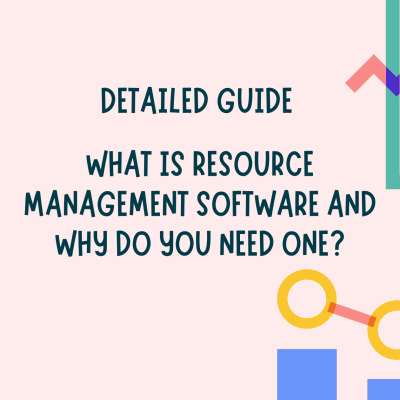From CEO to COO: Demystifying C-Suite Titles and Their Power Dynamics
Navigating the corporate landscape can be tricky, especially when it comes to understanding titles like CEO, CFO and COO. These positions are part of an elite group known as the C-Suite, which consists of a company’s most important senior executives.
This comprehensive guide serves as your map to decode these high-ranking roles in corporate leadership. Ready? Let’s take a deep dive into the fascinating world of C-suite titles.
Key Takeaways
- The C-Suite refers to the top executive-level managers in a company, including positions such as CEO, CFO, COO, CMO, CIO, CHRO, and GC.
- Traditional roles like CEO, CFO, and COO still hold importance in corporate leadership, but new roles like Chief Data Officer (CDO) and Chief Product Officer (CPO) are emerging to meet modern business demands.
- The top C-level titles have specific responsibilities within the organization’s hierarchy. For example: CEOs make major corporate decisions; CFOs oversee financial operations; COOs handle day-to-day functions; CMOs focus on marketing; CIOs manage technology-related decisions; CHROs govern workforce planning strategies; GCs handle legal matters.
- Emerging roles like Chief Data Officer (CDO), Chief Product Officer (CPO), and Chief Budget Officer (CBO) are shaping corporate leadership by driving data-driven initiatives, innovation in product development and management,guiding financial strategy respectively.
Understanding the C-Suite
The C-suite refers to the top executive-level managers in a company who hold high-ranking titles such as CEO, CFO, COO, CMO, CIO, CHRO, and GC.
What is the C-suite?
The C-suite refers to the top senior executives of a corporation, holding positions that are typically preceded by the word “chief.” Essentially, these roles form the powerhouse of a company, guiding its strategic direction and decision-making processes.
Some examples include the CEO (Chief Executive Officer), CFO (Chief Financial Officer), COO (Chief Operating Officer), and newer additions like CDO (Chief Data Officer) or CPO (Chief Product Officer).
These important figures carry substantial decision-making power within their organizations. They drive necessary changes, build effective teams, and play crucial parts in shaping corporate policies and strategies.
Their main responsibilities revolve around overseeing various aspects of their respective corporations to ensure smooth operations and steady growth.
Traditional roles vs modern-day roles
In the rapidly evolving corporate world, C-suite titles are also experiencing a shift. Traditional roles like CEO, CFO, and COO still hold importance, but new roles have emerged to meet the demands of modern-day businesses. Here is a comparison of traditional and modern roles:
| Traditional C-Suite Roles | Modern C-Suite Roles |
|---|---|
| Chief Executive Officer (CEO) – Responsible for overall management and direction of the company. | Chief Data Officer (CDO) – Oversee the management, governance, and utilization of information as an asset. |
| Chief Financial Officer (CFO) – In charge of financial planning and record-keeping, as well as financial reporting to higher management. | Chief Product Officer (CPO) – Manage all activities related to developing, launching, and managing a product or portfolio of products. |
| Chief Operating Officer (COO) – Oversee the day-to-day administrative and operational functions of a business. | Chief Budget Officer (CBO) – Guides financial strategy, managing the process for financial forecasting and budgets. |
These changes represent the need for big-picture thinking, a focus on thought leadership, and responsiveness to customer needs. Modern roles such as Chief Data Officers (CDOs), Chief Product Officers (CPOs), and Chief Budget Officers (CBOs) are increasingly important in the C-Suite, illustrating the evolving nature of corporate leadership.
The Top C-Level Titles and Their Descriptions
The top C-level titles in corporate leadership include CEO, President, CFO, COO, CMO, CIO, CHRO, and GC. Each of these positions has specific responsibilities and roles within the organization’s hierarchy.
CEO, President, CFO, COO, CMO, CIO, CHRO, GC
The CEO, or Chief Executive Officer, holds the top position in a company and takes on the primary responsibility for major corporate decisions. Next is the President who acts as the second-in-command to the CEO and often steps in when they’re unavailable.
The CFO or Chief Financial Officer oversees financial operations such as budgeting, tax compliance, and risk management. A company’s COO (Chief Operating Officer) handles day-to-day administrative and operational functions.
Marketing responsibilities fall under the purview of a CMO (Chief Marketing Officer), while technology-related decisions are managed by a CIO (Chief Informational Officer). HR policies, workforce planning strategies, and hiring practices are governed by CHROs (Chief Human Resources Officers).
Finally, we have GCs or General Counsels who take care of all legal matters related to an organization including litigations, contracts and intellectual property rights.
Emerging C-Suite Titles
Learn about the latest additions to the C-Suite, such as Chief Data Officer and Chief Product Officer, and how they are shaping corporate leadership in the modern world.
Chief Data Officer
The Chief Data Officer (CDO) is a crucial role in the C-Suite that has emerged in recent years. The CDO is responsible for managing and leveraging an organization’s data assets to drive strategic decision-making and innovation.
This executive-level manager ensures the quality, security, and effective use of data throughout the company. With their expertise in data analytics, privacy regulations, and technology trends, CDOs play a pivotal role in shaping an organization’s data-driven initiatives and driving digital transformation.
As organizations increasingly rely on data to gain a competitive edge, the CDO plays a vital role in maximizing its value. They collaborate with cross-functional teams to identify opportunities for using data effectively, develop strategies for collecting and analyzing relevant information, and implement robust governance practices.
By championing data-driven culture within organizations, CDOs enable better operational efficiency, customer insights, risk management, and overall organizational performance.
With their intimate knowledge of emerging technologies like artificial intelligence (AI), machine learning (ML), cloud computing, and advanced analytics tools, CDOs are instrumental in driving innovation through enhanced use of data across various business functions.
They work closely with other members of the leadership team to align data initiatives with business goals while ensuring compliance with regulations related to privacy and security.
Chief Product Officer
The Chief Product Officer (CPO) is a pivotal role in corporate leadership, responsible for overseeing the development and management of an organization’s products or services. They play a crucial role in driving innovation, market strategy, and product development.
The CPO collaborates with various teams including marketing, sales, finance, and engineering to ensure that products align with customer needs and business goals. This executive leader focuses on identifying market opportunities, conducting market research, and making data-driven decisions to optimize product performance.
With their expertise in product management and strategic planning, the CPO plays a vital part in shaping the direction of a company’s offerings and ensuring its competitive edge in the marketplace.
Chief Budget Officer
The Chief Budget Officer is a crucial role in the C-Suite, responsible for overseeing the financial planning and budgeting activities of an organization. This executive ensures that resources are efficiently allocated, monitors financial performance, and provides strategic recommendations on budgetary matters.
The Chief Budget Officer collaborates with other executives to align budgets with organizational goals and objectives while optimizing spending. Their expertise in financial analysis and forecasting helps drive informed decision-making and supports the company’s overall financial health.
As companies continue to prioritize cost management, this role becomes increasingly valuable in maintaining fiscal discipline and maximizing profitability.
Need for Adaptation in C-Suite Titles
The need for adaptation in C-Suite titles is driven by the importance of big-picture thinking, flattening corporate structures, and a focus on thought leadership and customer needs.
Big-picture thinking
C-suite executives need to have big-picture thinking skills in order to navigate the complexities of corporate leadership. They must be able to see beyond day-to-day operations and understand how their decisions impact the overall strategy and vision of the company.
By taking a broader perspective, C-suite leaders can identify new opportunities, anticipate risks, and make informed strategic choices that drive long-term success. Big-picture thinking involves considering market trends, competitive analysis, customer needs, and industry challenges to develop a clear direction for the organization.
It requires the ability to think critically and strategically, analyze data, collaborate with cross-functional teams, and communicate effectively across all levels of the company. With their focus on long-term goals and vision, C-Suite executives who possess big-picture thinking skills are better equipped to guide their organizations towards sustainable growth amidst a rapidly changing business landscape.
Flattening corporate structures
Organizations today are recognizing the need to flatten their corporate structures. This shift aims to promote agility, collaboration, and faster decision-making. By eliminating hierarchical layers and fostering a more open work environment, companies can empower employees at all levels to contribute their ideas and expertise.
Flattening corporate structures also enables organizations to adapt quickly to changing market dynamics, innovate more effectively, and respond promptly to customer needs. As a result, companies become more nimble, efficient, and responsive in an increasingly competitive business landscape.
Focus on thought leadership and customer needs
C-suite executives need to prioritize thought leadership and customer needs in order to drive success for their organizations. By staying ahead of industry trends and demonstrating innovative thinking, these leaders can guide their companies towards long-term growth.
Additionally, understanding and meeting the evolving needs of customers is crucial for maintaining a competitive edge in today’s market. C-Suite executives must stay attuned to customer feedback, leveraging insights to drive strategic decision-making and shape the company’s direction.
This focus on thought leadership and customer-centricity allows organizations to adapt, thrive, and build strong relationships with their target audience.
How to Build a Career in the C-Suite
To build a successful career in the C-Suite, individuals must possess essential skills such as strategic thinking, strong leadership abilities, and excellent communication skills. They can aim for job titles like CEO, CFO, or COO and work towards gaining relevant experience and expertise in their chosen field.
Networking with industry professionals and continuously improving their knowledge through professional development opportunities are also crucial steps towards becoming a C-level executive.
Essential skills for C-level executives
C-level executives possess a set of essential skills that enable them to effectively lead and manage their organizations. These skills include:
| Attribute | Description |
|---|---|
| Strategic thinking | Develop long-term strategies aligned with company vision. |
| Decision-making | Analyze information, weigh options, and drive the organization. |
| Leadership | Inspire and guide teams towards success. |
| Financial acumen | Understand financial statements and forecasting. |
| Communication | Articulate company’s vision and inspire stakeholders. |
| Adaptability | Navigate challenges and seize opportunities in changing landscapes. |
| Relationship building | Establish trust with various stakeholders. |
| Innovation mindset | Promote creativity and support new ideas. |
Examples of C-level job titles
C-level job titles are high-ranking executive positions within a company. These individuals are responsible for making strategic decisions and overseeing various aspects of the business. Here are some examples of C-level job titles:
- CEO (Chief Executive Officer) – The CEO is the highest-ranking executive in a company and has overall responsibility for its success.
- CFO (Chief Financial Officer) – The CFO oversees financial operations, including budgeting, forecasting, and financial reporting.
- COO (Chief Operating Officer) – The COO is in charge of day-to-day operations and ensuring that business processes run smoothly.
- CMO (Chief Marketing Officer) – The CMO develops and implements marketing strategies to promote the company’s products or services.
- CIO (Chief Information Officer) – The CIO manages the company’s information technology systems and ensures data security.
- CHRO (Chief Human Resources Officer) – The CHRO oversees all aspects of human resources, including recruitment, training, and employee relations.
- GC (General Counsel) – The GC provides legal advice and guidance to the company and handles any legal issues or disputes.
Corporate executive compensation
Corporate executive compensation reflects the critical role that C-Suite members play in a company’s overall performance. This remuneration package typically includes base salary, bonuses, equity, and various benefits. The table below provides a glimpse into the likely compensation for some C-Suite executives.
| Title | Base Salary | Bonus | Equity | Benefits |
|---|---|---|---|---|
| CEO (Chief Executive Officer) | High | Dependent on company performance | Usually the largest equity holder | Comprehensive benefit package including health, retirement, etc. |
| CFO (Chief Financial Officer) | High | Dependent on company and financial performance | May hold significant equity | Comprehensive benefit package |
| COO (Chief Operating Officer) | High | Dependent on company and operational performance | May hold substantial equity | Comprehensive benefit package |
| CMO (Chief Marketing Officer) | High | Dependent on company and marketing performance | May hold equity | Comprehensive benefit package |
It’s important to note that compensation packages can vary significantly depending on the company’s size, industry, and performance. Furthermore, C-Suite executives often negotiate their compensation packages, leading to variations even within the same job title.
Steps to becoming a C-level executive
To become a C-level executive, follow these steps:
- Acquire relevant education and qualifications in business or a related field.
- Gain significant experience and expertise in your chosen industry or sector.
- Develop strong leadership skills, including the ability to inspire and motivate teams.
- Build a network of contacts and connections within your industry.
- Seek out opportunities for professional growth and development, such as attending conferences or taking on challenging projects.
- Continuously improve your knowledge and stay updated on industry trends and best practices.
- Demonstrate exceptional performance in your current role to gain recognition and advancement opportunities.
- Seek out mentors or coaches who can provide guidance and support in your career journey.
- Take on increasing levels of responsibility and demonstrate the ability to make strategic decisions.
- Be proactive in seeking out promotions or new job opportunities that align with your long-term career goals.
Conclusion
Understanding the hierarchy of C-Suite titles is essential for aspiring executives and those looking to navigate corporate leadership. This comprehensive guide has provided insights into the traditional and emerging roles in the C-Suite, as well as the need for adaptation in these titles.
By decoding the dynamics of this elite group of executives, individuals can better understand their career paths and aspirations within corporate leadership.
FAQs
1. What is the C-suite in corporate leadership?
The C-suite refers to the top executive level of a company, consisting of individuals who hold titles such as CEO, CFO, and CTO.
2. What does CEO stand for?
CEO stands for Chief Executive Officer, which is the highest-ranking executive in a company responsible for making important decisions and setting strategic goals.
3. How does the hierarchy of C-suite titles work?
The hierarchy of C-suite titles varies by organization but generally follows a structure where the CEO is at the top, followed by other executives like CFO (Chief Financial Officer) and COO (Chief Operations Officer).
4. Are there any other common C-suite titles besides CEO?
Yes, other common C-suite titles include CFO (Chief Financial Officer), COO (Chief Operations Officer), CTO (Chief Technology Officer), and CHRO (Chief Human Resources Officer).
5. What are some responsibilities of different C-level executives?
Different executives have specific roles and responsibilities within an organization. For example, the CFO oversees financial matters, while the COO manages day-to-day operations and efficiencies. The roles can vary depending on industry and company size.
One Comment
Comments are closed.






… [Trackback]
[…] Find More to that Topic: spotsaas.com/blog/c-suite-titles/ […]